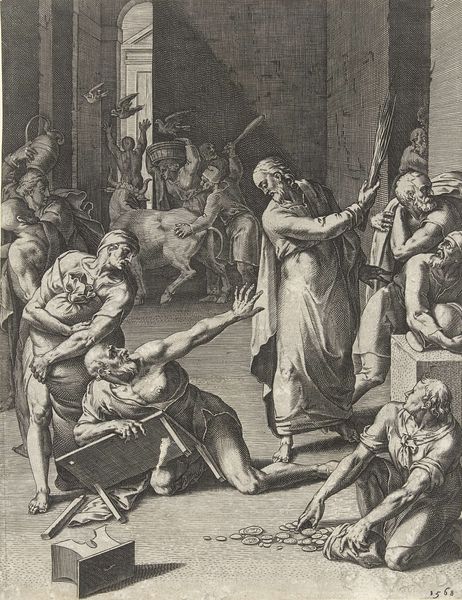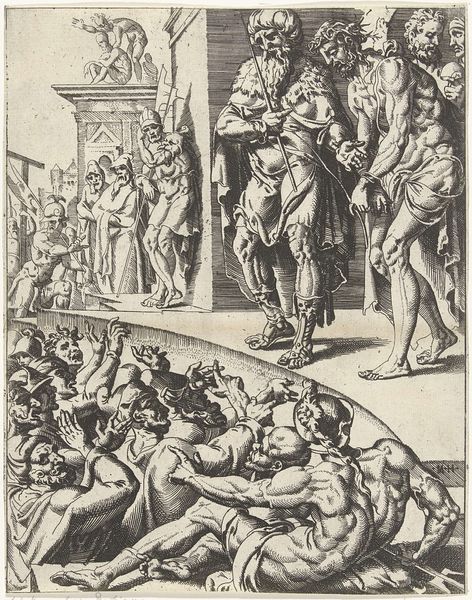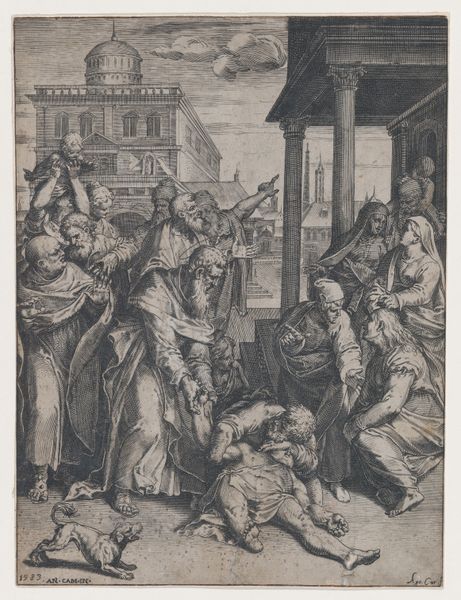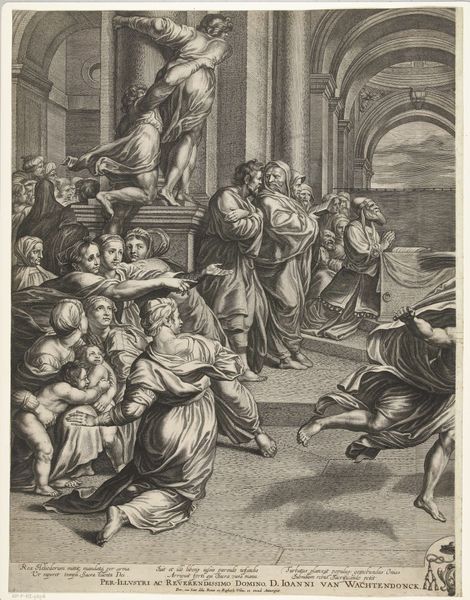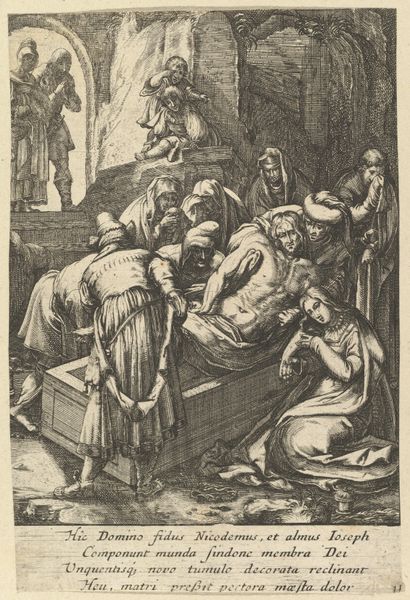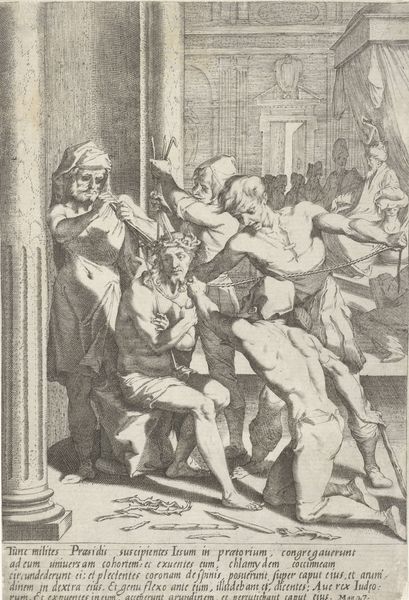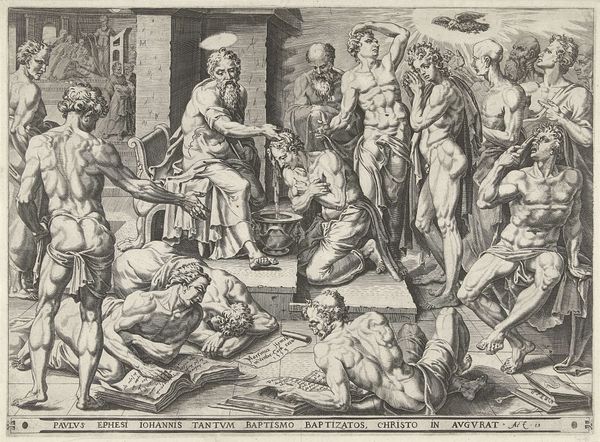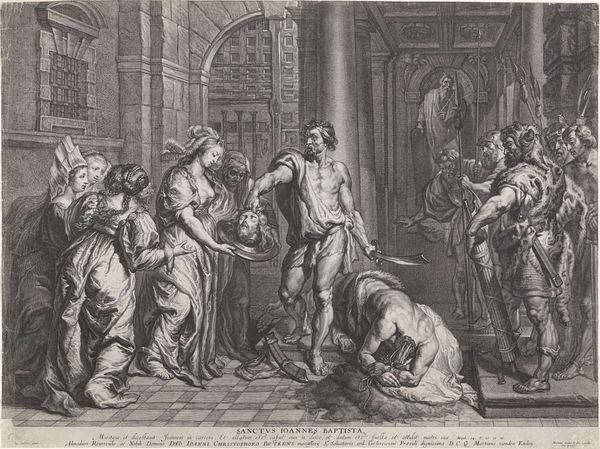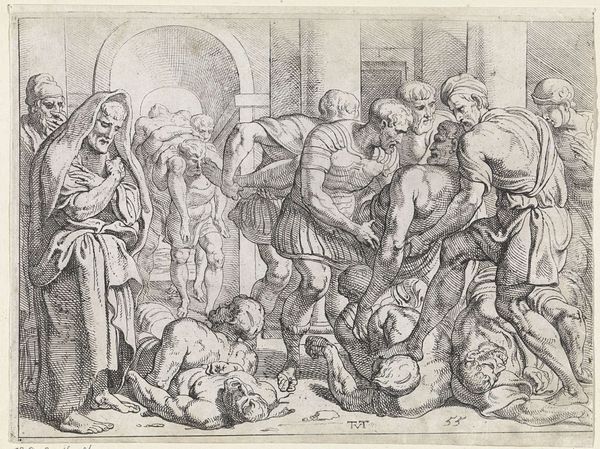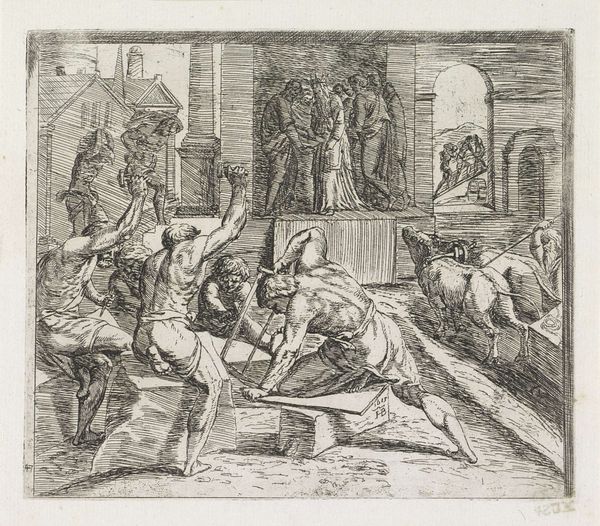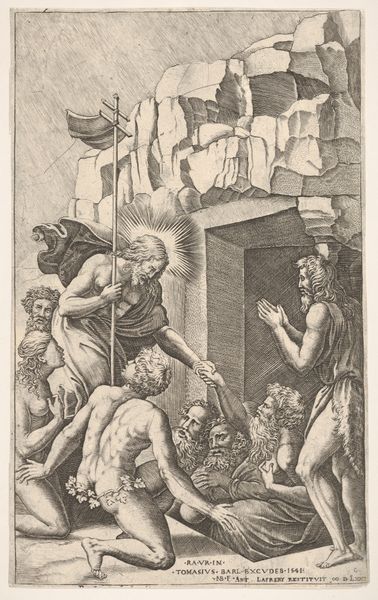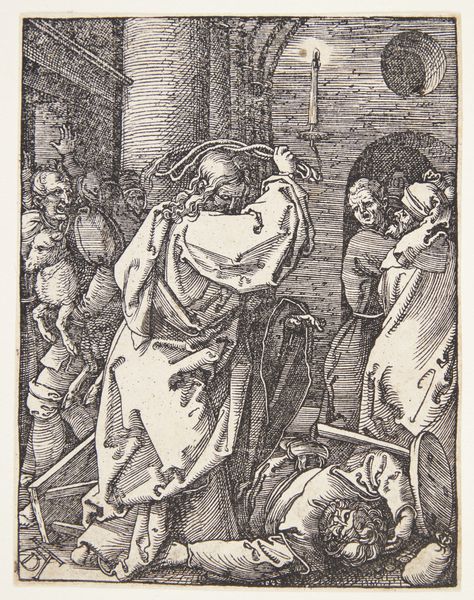
print, engraving
#
narrative-art
#
baroque
# print
#
old engraving style
#
figuration
#
history-painting
#
engraving
Dimensions: height 268 mm, width 197 mm
Copyright: Rijks Museum: Open Domain
Editor: This print, "Christus verdrijft de geldwisselaars uit de tempel," made before 1676 by an anonymous artist, depicts a chaotic scene. There’s definitely a sense of upheaval and anger. What strikes you when you look at it? Curator: What jumps out at me is the explicit critique of institutional corruption, a theme deeply resonant in the Baroque era, rife with religious and political tensions. How does the artist use the figure of Christ to challenge established power structures? Editor: I see Christ as a figure of righteousness, literally overturning the tables of the money changers. Is it just a biblical story, or something more? Curator: Absolutely more. Consider the context. The Baroque period saw both the consolidation of church power and emerging challenges to it. This image functions as a powerful visual sermon. It implicates the viewer: where do *we* tolerate the corruption of sacred spaces by commerce, both literally and metaphorically? Where are our own "temples" profaned? Editor: So, it’s less about a historical event and more about a call to action? Curator: Precisely. And consider the distribution method - a print! This wasn’t meant for a wealthy patron's private collection. Prints like these were designed to be disseminated widely, sparking conversations and, ideally, social change. The choice of this specific biblical passage is no accident. Editor: That's a really powerful interpretation. I hadn't considered the print's function as a tool for social commentary. Curator: It invites us to reflect on how art can serve as a form of activism. Now, considering this artwork's engagement in its cultural environment, do you think such an artwork might inspire the contemporary era? Editor: Definitely, considering debates on religion and money continue nowadays, understanding Baroque criticism empowers more awareness. Curator: Exactly.
Comments
No comments
Be the first to comment and join the conversation on the ultimate creative platform.
